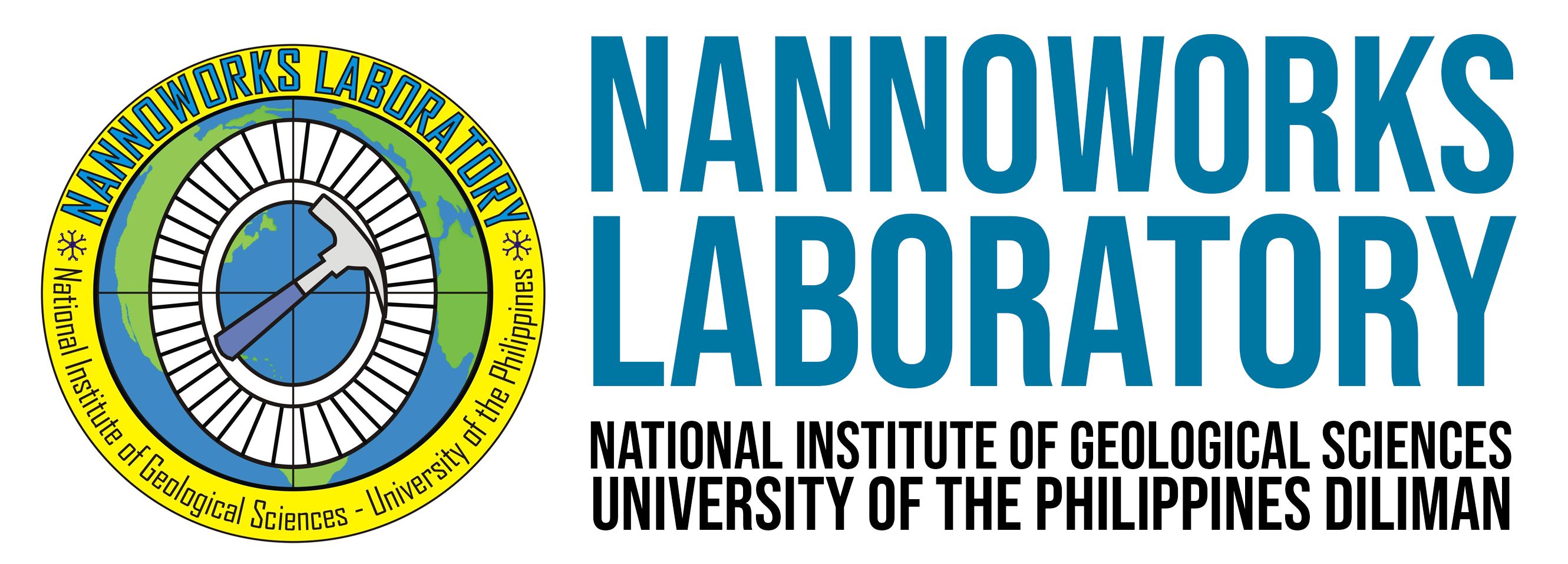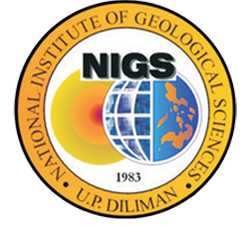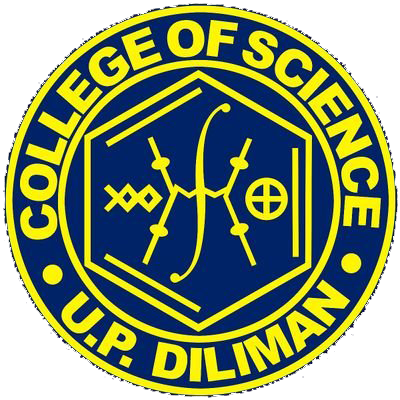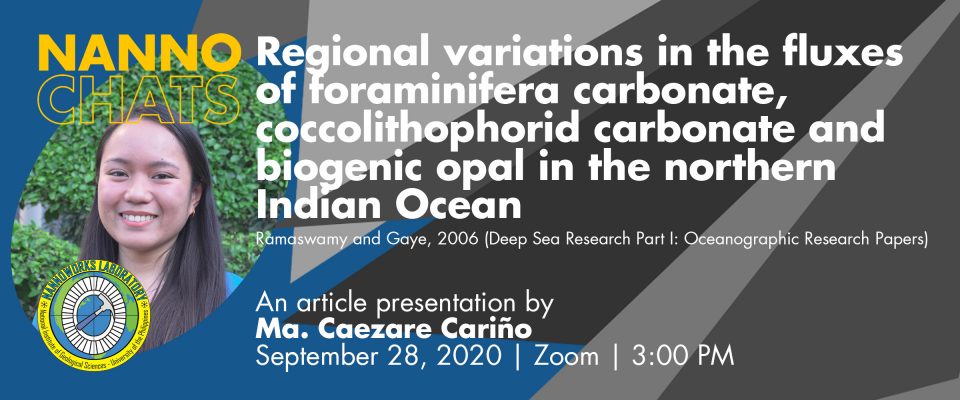On September 28, 2020, laboratory member Ma. Caezare Mae Cariño, presented a paper by Ramaswamy and Gaye (2006) on the carbonate and biogenic opal fluxes of foraminifers, coccolithophorids and diatoms in the northern Indian Ocean. The presentation was held through Zoom at 3 o’clock in the afternoon.
ABSTRACT
Mass fluxes of diatom opal, planktonic foraminifera carbonate and coccolithophorid carbonate were measured with time-series sediment traps at six sites in the Arabian Sea, Bay of Bengal and Equatorial Indian Ocean (EIOT). The above fluxes were related to regional variations in salinity, temperature and nutrient distribution. Annual fluxes of diatom opal range between 3 and 28 g m−2 yr−1, while planktonic foraminifera carbonate fluxes range between 6 and 23 g m−2 yr−1 and coccolithophorid carbonate fluxes range between 4 and 24 g m−2 yr−1. Annual planktonic foraminifera carbonate to coccolithophorid carbonate ratios range between 0.8 and 2.2 and coccolithophorid carbonate to diatom opal ratios range between 0.5 and 3.3.
In the western Arabian Sea, coccolithophorids are the major contributors to biogenic flux during periods of low nutrient concentrations. Coccolithophorid carbonate fluxes decrease and planktonic foraminiferal carbonate and diatom opal fluxes increase when nutrient-rich upwelled waters are advected over the trap site. In the oligotropic eastern Arabian Sea, coccolithophorid carbonate fluxes are high throughout the year. Planktonic foraminiferal carbonate fluxes are the major contributors to biogenic flux in the EIOT. In the northern and central Bay of Bengal, when surface salinity values drop sharply during the SW monsoon, there is a drastic reduction in planktonic foraminiferal carbonate fluxes, but coccolithophorid carbonate and diatom opal fluxes remain steady or continue to increase. Distinctly higher annual molar Sibio/Cinorg (>1) and Corg/Cinorg (>1.5) ratios are observed in the northern and central Bay of Bengal mainly due to lower foraminiferal carbonate production as a result of sharp salinity variations. We can thus infer that the enhanced freshwater supply from rivers should increase oceanic CO2 uptake. Its silicate supply favours the production of diatoms while the salinity drop produces conditions unfavourable for most planktonic foraminifera species.
Ramaswamy, V., & Gaye, B. (2006). Regional variations in the fluxes of foraminifera carbonate, coccolithophorid carbonate and biogenic opal in the northern Indian Ocean. Deep Sea Research Part I: Oceanographic Research Papers, 53(2), 271-293.





